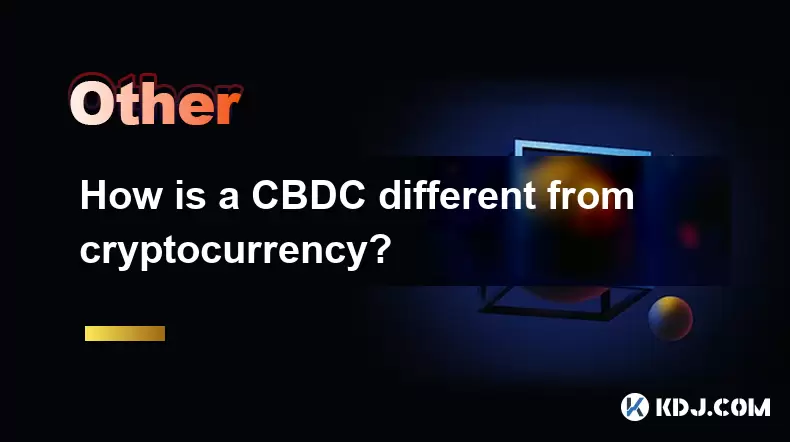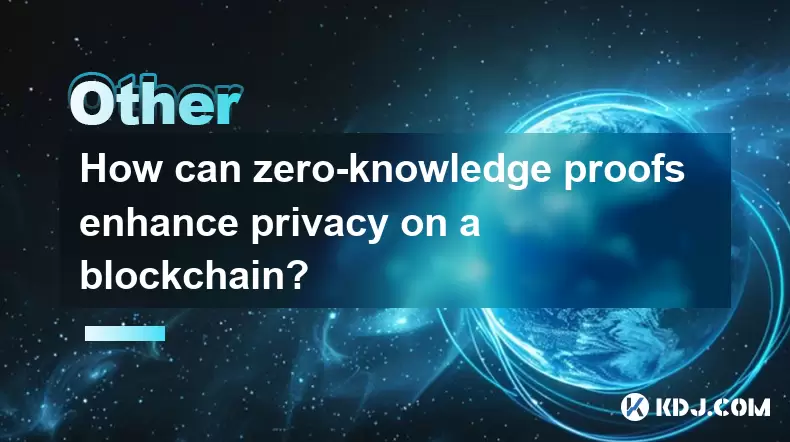-
 Bitcoin
Bitcoin $117800
0.49% -
 Ethereum
Ethereum $4432
0.55% -
 XRP
XRP $3.106
1.07% -
 Tether USDt
Tether USDt $1.001
0.01% -
 BNB
BNB $835.8
1.74% -
 Solana
Solana $189.1
2.72% -
 USDC
USDC $0.9999
-0.01% -
 Dogecoin
Dogecoin $0.2302
3.65% -
 TRON
TRON $0.3485
-0.69% -
 Cardano
Cardano $0.9212
-0.91% -
 Hyperliquid
Hyperliquid $46.97
1.45% -
 Chainlink
Chainlink $22.77
5.61% -
 Stellar
Stellar $0.4284
0.82% -
 Sui
Sui $3.766
2.82% -
 Bitcoin Cash
Bitcoin Cash $583.5
-0.82% -
 Ethena USDe
Ethena USDe $1.001
0.03% -
 Hedera
Hedera $0.2512
2.78% -
 Avalanche
Avalanche $24.18
2.27% -
 Litecoin
Litecoin $120.2
2.10% -
 Toncoin
Toncoin $3.450
1.96% -
 UNUS SED LEO
UNUS SED LEO $9.412
-0.92% -
 Shiba Inu
Shiba Inu $0.00001298
2.35% -
 Uniswap
Uniswap $10.99
3.75% -
 Polkadot
Polkadot $3.962
3.09% -
 Dai
Dai $1.000
0.00% -
 Bitget Token
Bitget Token $4.643
1.38% -
 Cronos
Cronos $0.1511
-0.08% -
 Ethena
Ethena $0.7246
3.18% -
 Monero
Monero $254.9
7.90% -
 Pepe
Pepe $0.00001100
3.32%
How are private chain transactions verified and why is it faster?
Private chain transactions are faster due to fewer validators, simpler consensus mechanisms like PBFT, and no mining, allowing for higher throughput and lower latency.
May 15, 2025 at 09:35 pm

Introduction to Private Chain Transactions
Private blockchain transactions are those that occur on a blockchain network that is restricted to a specific group of participants, typically within an organization or a consortium of organizations. Unlike public blockchains, where anyone can participate, private blockchains limit access and control to a select group, which has significant implications for transaction verification and speed.
The Verification Process in Private Chains
In a private blockchain, transaction verification is managed by a set of pre-approved nodes or validators. These nodes are responsible for ensuring that transactions are valid and conform to the rules set by the network. The process typically involves the following steps:
- Transaction Submission: A participant submits a transaction to the network.
- Validation Check: The transaction is checked against the network's rules and the current state of the ledger.
- Consensus Mechanism: The validators reach a consensus on the validity of the transaction. In private chains, this is often achieved through simpler consensus mechanisms like Practical Byzantine Fault Tolerance (PBFT) or Raft.
- Block Creation: Once consensus is reached, the transaction is added to a block, which is then appended to the blockchain.
Why Private Chain Transactions Are Faster
The speed of transaction verification in private chains can be attributed to several factors:
Limited Number of Validators: Since the number of nodes involved in the consensus process is smaller and known in advance, the time required to reach a consensus is significantly reduced. In contrast, public blockchains like Bitcoin and Ethereum have thousands of nodes, which can slow down the process.
Simplified Consensus Mechanisms: Private chains often use consensus algorithms that are less computationally intensive than those used in public blockchains. For example, PBFT requires fewer rounds of communication among nodes compared to Proof of Work (PoW) used in Bitcoin.
Controlled Environment: The controlled nature of private blockchains means that the network can be optimized for performance. This includes setting up the infrastructure to handle high transaction volumes and ensuring that all nodes are reliable and well-maintained.
No Mining Required: Unlike public blockchains where miners compete to solve complex mathematical problems to validate transactions, private chains do not require mining. This eliminates the need for energy-intensive computations, further speeding up the process.
Detailed Example of a Private Chain Transaction
To illustrate how a transaction is verified in a private chain, let's consider a hypothetical scenario in a supply chain management system:
- Transaction Initiation: A supplier submits a transaction to update the status of a shipment to "delivered."
- Transaction Broadcast: The transaction is broadcast to all nodes in the private network.
- Validation: Each node checks the transaction against the network's rules, such as verifying the supplier's identity and ensuring the shipment ID exists in the ledger.
- Consensus: The nodes use a consensus algorithm like PBFT to agree on the transaction's validity. In PBFT, the process involves:
- Pre-prepare: The primary node proposes the transaction.
- Prepare: Nodes acknowledge the proposal.
- Commit: Nodes agree to commit the transaction to the ledger.
- Block Addition: Once consensus is reached, the transaction is added to a new block, which is then appended to the blockchain.
Security and Trust in Private Chains
While private chains are faster, they also rely heavily on the trust and security measures within the network. Since the participants are known and vetted, the risk of malicious actors is lower. However, this also means that the security of the network depends on the integrity of the participating nodes. To maintain security, private chains often implement:
- Access Controls: Only authorized participants can join the network.
- Encryption: Transactions and communications are encrypted to prevent unauthorized access.
- Audit Trails: Detailed logs are kept to track all activities on the network.
Performance Metrics in Private Chains
To quantify the speed of private chain transactions, several performance metrics are commonly used:
- Transaction Throughput: The number of transactions that can be processed per second. Private chains can achieve higher throughput due to their optimized consensus mechanisms.
- Latency: The time it takes for a transaction to be confirmed and added to the blockchain. Private chains typically have lower latency compared to public blockchains.
- Scalability: The ability of the network to handle an increasing number of transactions without performance degradation. Private chains are often designed to be scalable within the confines of their controlled environment.
Frequently Asked Questions
Q: Can private chains be used for public transactions?
A: While private chains are designed for restricted access, it is possible to use them for public transactions by implementing additional layers of access control and possibly integrating with public blockchains. However, this would require careful consideration of the trade-offs between privacy, security, and openness.
Q: How do private chains handle disputes or errors in transactions?
A: Private chains typically have governance mechanisms in place to handle disputes or errors. This can include a voting system among participants or a designated authority that can reverse or correct transactions. The specific process depends on the network's rules and the consensus mechanism used.
Q: Are private chains more cost-effective than public blockchains?
A: Private chains can be more cost-effective in certain scenarios, particularly when the network is designed to handle high transaction volumes within a controlled environment. The absence of mining and the use of simpler consensus mechanisms can reduce operational costs. However, the initial setup and maintenance of a private chain can be expensive, so the cost-effectiveness depends on the specific use case and scale of operations.
Q: Can private chains be integrated with other blockchain networks?
A: Yes, private chains can be integrated with other blockchain networks, including public blockchains, through various interoperability solutions. This can be achieved using technologies like cross-chain bridges or sidechains, allowing for the seamless transfer of assets and data between different networks.
Disclaimer:info@kdj.com
The information provided is not trading advice. kdj.com does not assume any responsibility for any investments made based on the information provided in this article. Cryptocurrencies are highly volatile and it is highly recommended that you invest with caution after thorough research!
If you believe that the content used on this website infringes your copyright, please contact us immediately (info@kdj.com) and we will delete it promptly.
- Kazakhstan's Crypto Leap: Bitcoin ETF and Central Asia's Digital Finance Future
- 2025-08-13 12:45:19
- BlockDAG Presale Blazes Past $371M: Fundraising Frenzy Fuels Crypto Sensation
- 2025-08-13 13:05:21
- Meme Coins: Chasing the 2025 Surge – Which Will Moonshot?
- 2025-08-13 10:25:23
- Bitcoin's Wild Ride: Rally, Pullback, and What's Next
- 2025-08-13 10:25:23
- Bitcoin, Bitmax, and Institutional Demand: A New Era of Crypto Investment
- 2025-08-13 10:45:12
- Solana, ROAM, and Airdrops: What's the Buzz in 2025?
- 2025-08-13 11:35:13
Related knowledge

How does blockchain enable Web3?
Aug 13,2025 at 11:35am
Understanding the Role of Blockchain in Web3 InfrastructureBlockchain serves as the foundational layer upon which Web3 is built, enabling a decentrali...

How is a CBDC different from cryptocurrency?
Aug 12,2025 at 09:21am
Understanding the Core Nature of CBDCsA Central Bank Digital Currency (CBDC) is a digital form of a country’s sovereign currency, issued and regulated...

What is a CBDC (Central Bank Digital Currency)?
Aug 13,2025 at 11:36am
Understanding the Concept of a Central Bank Digital CurrencyA CBDC (Central Bank Digital Currency) is a digital form of a country’s fiat currency that...

How can zero-knowledge proofs enhance privacy on a blockchain?
Aug 12,2025 at 02:15am
Understanding Zero-Knowledge Proofs in Blockchain ContextZero-knowledge proofs (ZKPs) are cryptographic protocols that allow one party (the prover) to...

How does blockchain governance work?
Aug 13,2025 at 11:35am
Understanding Blockchain GovernanceBlockchain governance refers to the mechanisms and processes through which decisions are made about the development...

What is on-chain vs. off-chain data?
Aug 13,2025 at 11:35am
Understanding On-Chain Data in CryptocurrencyOn-chain data refers to all information that is permanently recorded and stored directly on a blockchain....

How does blockchain enable Web3?
Aug 13,2025 at 11:35am
Understanding the Role of Blockchain in Web3 InfrastructureBlockchain serves as the foundational layer upon which Web3 is built, enabling a decentrali...

How is a CBDC different from cryptocurrency?
Aug 12,2025 at 09:21am
Understanding the Core Nature of CBDCsA Central Bank Digital Currency (CBDC) is a digital form of a country’s sovereign currency, issued and regulated...

What is a CBDC (Central Bank Digital Currency)?
Aug 13,2025 at 11:36am
Understanding the Concept of a Central Bank Digital CurrencyA CBDC (Central Bank Digital Currency) is a digital form of a country’s fiat currency that...

How can zero-knowledge proofs enhance privacy on a blockchain?
Aug 12,2025 at 02:15am
Understanding Zero-Knowledge Proofs in Blockchain ContextZero-knowledge proofs (ZKPs) are cryptographic protocols that allow one party (the prover) to...

How does blockchain governance work?
Aug 13,2025 at 11:35am
Understanding Blockchain GovernanceBlockchain governance refers to the mechanisms and processes through which decisions are made about the development...

What is on-chain vs. off-chain data?
Aug 13,2025 at 11:35am
Understanding On-Chain Data in CryptocurrencyOn-chain data refers to all information that is permanently recorded and stored directly on a blockchain....
See all articles

























































































